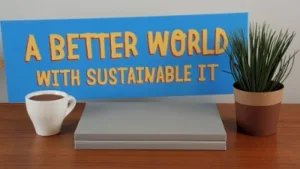TCO Development today launched the latest generation TCO Certified sustainability certification for IT products. The revision includes new criteria for reducing hazardous non-halogenated flame retardant substances and replacing them with safer alternatives. First to certify product include displays from Eizo, Dell, Lenovo, LG and Samsung.
“Today there are over 40 000 chemical substances on the market and the environmental and human health effects of the vast majority are unknown,” comments Niclas Rydell, Certification Director at TCO Development. “Our goal with the new criteria is to provide the electronics and chemical industries with an incentive to test the flame retardants they use and provide information on their effects. We believe it’s time for the IT industry to take a greater responsibility in this area.”
As the most hazardous non-halogenated substances are phased out, they will be replaced with less hazardous alternatives. This assessment will be carried out using the GreenScreenTM for Safer Chemicals method, developed by US-based non-profit Clean Production Action. Substances assessed are assigned a benchmark between 1-4, with 1 being the most hazardous. Substances receiving benchmark 2-4 are included on the “TCO Development Accepted Substances List” and are accepted for use in certified products.
Other important developments in the new generation TCO Certified include
- Banning of four phthalates identified as most hazardous; DEHP, BBP, DBP and DIBP.
- Tighter criteria for socially responsible manufacturing, including code of conduct implementation and actions for preventing worker rights violations in the supply chain.
- Requirement for each brand to have a policy addressing conflict minerals as well as active participation in at least one initiative aimed at combatting their use.
IT products achieving TCO Certified are third party verified to meet criteria for environmental and social responsibility throughout the product life cycle, including manufacturing, use and end of life handling. Criteria are developed in collaboration with a wide group of stakeholders including purchasers, independent experts and industry.

